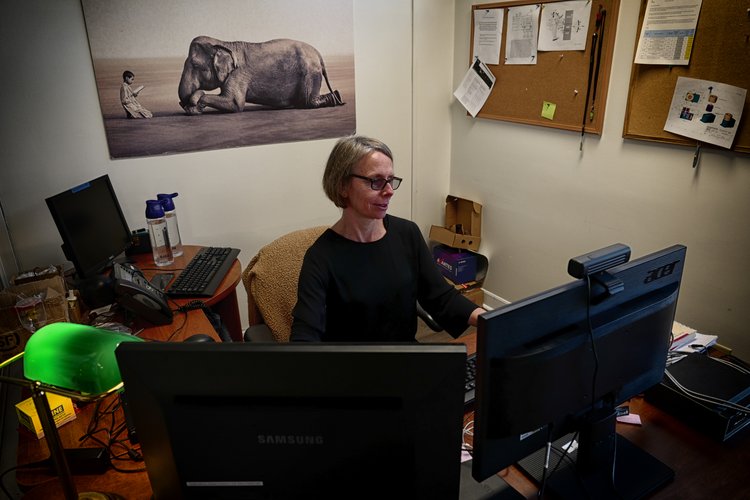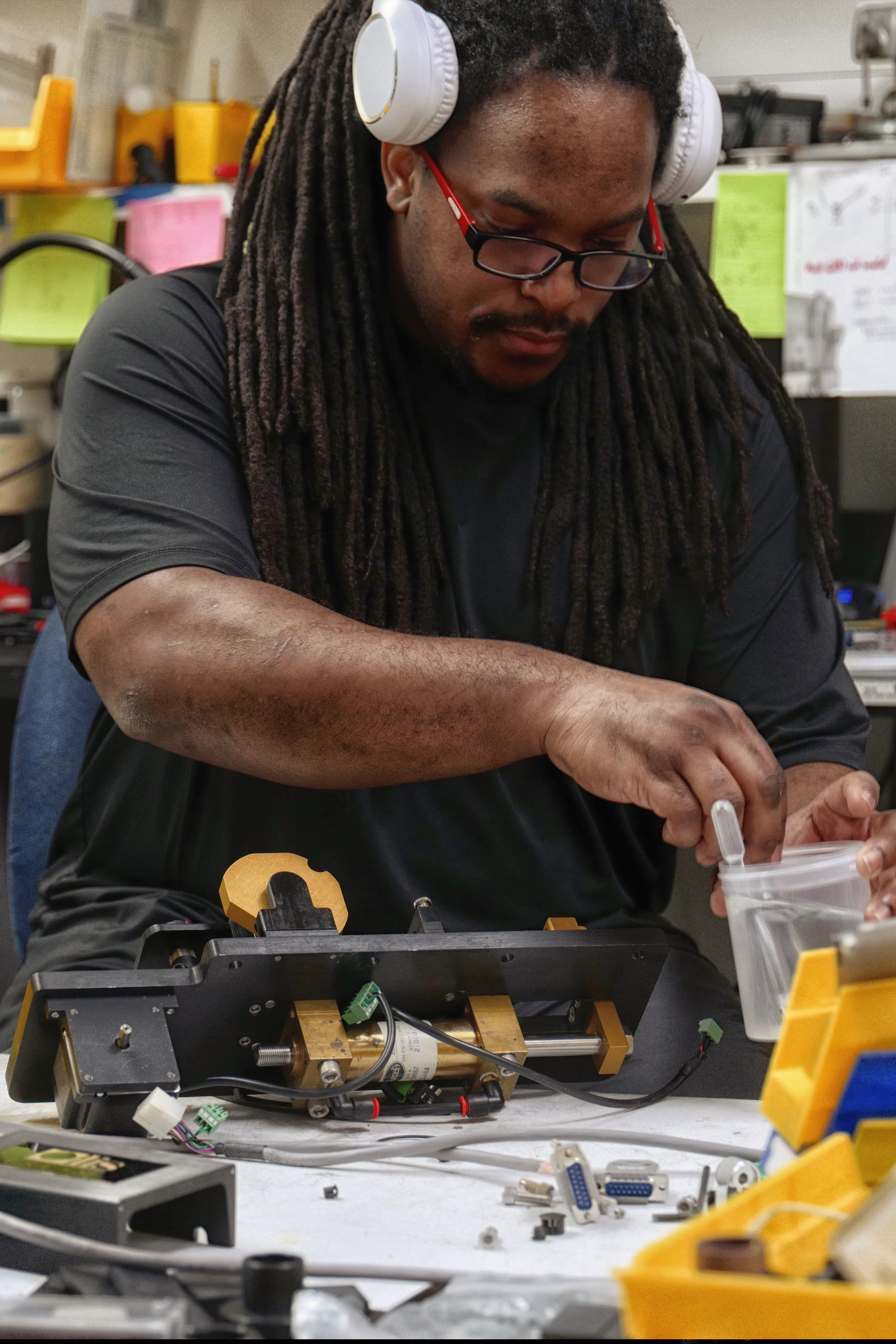The Facts About Circularly Polarized Luminescence Uncovered
The Facts About Circularly Polarized Luminescence Uncovered
Blog Article
Everything about Circularly Polarized Luminescence
Table of Contents9 Simple Techniques For Circularly Polarized LuminescenceFacts About Spectrophotometers RevealedSpectrophotometers Things To Know Before You BuyExcitement About Circular Dichroism8 Simple Techniques For Uv/visThe Of Uv/vis/nirWhat Does Uv/vis Do?Uv/vis for BeginnersSpectrophotometers for DummiesA Biased View of Circular DichroismWhat Does Circularly Polarized Luminescence Mean?Spectrophotometers Can Be Fun For EveryoneHow Circular Dichroism can Save You Time, Stress, and Money.
It is then scanned through the sample and the recommendation solutions. Portions of the occurrence wavelengths are transferred through, or shown from, the sample and the recommendation. Electronic circuits convert the relative currents into linear transmission percentages and/or absorbance/concentration values.The transmission of a recommendation substance is set as a standard (information) value, so the transmission of all other compounds are recorded relative to the preliminary "zeroed" compound. The spectrophotometer then converts the transmission ratio into 'absorbency', the concentration of particular parts of the test sample relative to the preliminary substance.
Since samples in these applications are not easily available in big quantities, they are particularly fit to being evaluated in this non-destructive strategy. In addition, valuable sample can be saved by utilizing a micro-volume platform where just 1u, L of sample is needed for complete analyses. A short explanation of the procedure of spectrophotometry includes comparing the absorbency of a blank sample that does not consist of a colored compound to a sample which contains a colored substance.
The Main Principles Of Circularly Polarized Luminescence
In biochemical experiments, a chemical and/or physical property is chosen and the procedure that is utilized is particular to that home in order to obtain more information about the sample, such as the quantity, purity, enzyme activity, etc. Spectrophotometry can be used for a number of techniques such as figuring out optimum wavelength absorbance of samples, identifying optimal p, H for absorbance of samples, figuring out concentrations of unidentified samples, and figuring out the p, Ka of various samples.: 21119 Spectrophotometry is also a practical procedure for protein filtration and can also be utilized as an approach to produce optical assays of a compound.
It is possible to know the concentrations of a 2 component mixture using the absorption spectra of the basic solutions of each element. To do this, it is essential to know the termination coefficient of this mix at two wave lengths and the extinction coefficients of services that contain the known weights of the 2 parts.

The Ultimate Guide To Circular Dichroism
The majority of spectrophotometers are used in the UV and noticeable areas of the spectrum, and a few of these instruments likewise operate into the near-infrared Area. The concentration of a protein can be estimated by measuring the OD at 280 nm due to the existence of tryptophan, tyrosine and phenylalanine (https://us.enrollbusiness.com/BusinessProfile/6552779/Olis%20Clarity).
This technique requires a spectrophotometer capable of measuring in the UV area with quartz cuvettes.: 135 Ultraviolet-visible (UV-vis) spectroscopy includes energy levels that thrill electronic transitions. Absorption of UV-vis light excites particles that are in ground-states to their excited-states.
These curves can be utilized to check a new batch of colorant to inspect if it makes a match to requirements, e
Traditional visible standard noticeable can not detect if a colorant or the base material has product. This can make it difficult to handle color issues if for example one or more of the printing inks is fluorescent. There are two significant setups for visual spectrum spectrophotometers, d/8 (round) and 0/45.
Scientists use this instrument to measure the amount of substances in a sample. If the compound is more concentrated more light will be absorbed by the sample; within small ranges, the Beer, Lambert law holds and the absorbance between samples differ with concentration linearly. In the case of printing measurements two alternative settings are typically used- without/with uv filter to manage better the effect of uv brighteners within the paper stock.
Circularly Polarized Luminescence Can Be Fun For Everyone
Some applications need little volume measurements which can be carried out with micro-volume platforms. As described in the applications area, spectrophotometry can be used in both qualitative and quantitative analysis of DNA, RNA, and proteins. Qualitative analysis can be utilized and spectrophotometers are used to tape spectra of substances by scanning broad wavelength areas to figure out the absorbance homes (the strength of the color) of the compound at each wavelength.

About Uv/vis
One major factor is the kind of photosensors that are offered for various spectral regions, but infrared measurement is also tough because virtually whatever releases IR as thermal radiation, specifically at wavelengths beyond about 5 m. Another complication is that quite a couple of products such as glass and plastic soak up infrared, making it incompatible as an optical medium.
Obtained Dec 23, 2018. Fundamental Lab Methods for Biochemistry and Biotechnology (2nd ed.). The important guide to analytical chemistry.
Oke, J. B.; Gunn, J. E.
Spectrophotometers - Questions

Ninfa AJ, Ballou DP, Benore M (2015 ). Fundamental Laboratory Methods for Biochemistry and Biotechnology (3, rev. ed.). UV/Vis. Lab Devices.
Not known Details About Circularly Polarized Luminescence
Recovered Jul 4, 2018. Trumbo, Toni A.; Schultz, Emeric; Borland, Michael G.; Pugh, Michael Eugene (April 27, 2013). "Applied Spectrophotometry: Analysis of a Biochemical Mixture". Biochemistry and Molecular Biology Education. 41 (4 ): 24250. doi:10. 1002/bmb. 20694. PMID 23625877. (PDF). www. mt.com. Mettler-Toledo AG, Analytical. 2016. Obtained Dec 23, 2018. Cortez, C.; Szepaniuk, A.; Gomes da Silva, L.
"Checking Out Proteins Filtration Methods Animations as Tools for the Biochemistry Teaching". Journal of Biochemistry Education. 8 (2 ): 12. doi:. Garrett RH, Grisham CM (2013 ). Biochemistry. Belmont, CA: Cengage. p. 106. ISBN 978-1133106296. OCLC 801650341. Vacation, Ensor Roslyn (May 27, 1936). "Spectrophotometry of proteins". Biochemical Journal. 30 (10 ): 17951803. doi:10. 1042/bj0301795.
PMID 16746224. Hermannsson, Ptur G.; Vannahme, Christoph; Smith, Cameron L. C.; Srensen, Kristian T.; Kristensen, Anders (2015 ). "Refractive index dispersion sensing utilizing a variety of photonic crystal resonant reflectors". Applied Physics Letters. 107 (6 ): 061101. Bibcode:2015 Ap, Ph, L. 107f1101H. doi:10. 1063/1. 4928548. S2CID 62897708. Mavrodineanu R, Schultz JI, Menis O, eds.
The Basic Principles Of Uv/vis
U.S. Department of Commerce check these guys out National Bureau of Standards unique publication; 378. Washington, D.C.: U.S. National Bureau of Standards.
The procedure starts with a regulated light that illuminates the examined sample. When it comes to reflection, as this light communicates with the sample, some is soaked up or produced. The emitted light journeys to the detector, which is examined, measured, and provided as industry-standard color scales and indices.
Market governing bodies usually define specific metrics for specific items, such as Tomato and Coffee indices. The simplified mathematics appears like this: Where R is the reflection coefficient. All terms are examined over the noticeable spectrum from 400 to 700 nm. When it comes to transmission, when the light connects with the sample, it is either taken in, reflected, or transferred.
The Main Principles Of Uv/vis
Examples include APHA (American Public Health Association) for watercolor and purity analysis, ASTM D1500 for petrochemical color analysis, edible oil indices used in food, and color analyses of beverages. The streamlined mathematics looks like this:. Where T is the transmission coefficient. All terms are examined over the noticeable spectrum from 400 to 700 nm.
Image Credit: Matej Kastelic/ Dr. Arnold J. Beckman and his associates at the National Technologies Laboratories initially created the spectrophotometer in 1940. In 1935 Beckman established the business, and the discovery of the spectrophotometer was their most ground-breaking creation.
Some Known Details About Spectrophotometers
99% accuracy. Gradually, researchers kept improving the spectrophotometer design to improve its efficiency. The UV abilities of the model B spectrophotometer were enhanced by replacing the glass prism with a quartz prism. Ultimately, the Model DU was produced, containing a hydrogen light and other improvements. This instrument was used in industrial labs, clinics, and chemistry and biochemistry departments.
Usually, a spectrophotometer is made up of two instruments, particularly, a spectrometer and a photometer. A fundamental spectrophotometer consists of a light source, a monochromator, a collimator for straight light beam transmission, a cuvette to place a sample, and a photoelectric detector.
Getting The Uv/vis/nir To Work
There are different kinds of spectrophotometers in different shapes and sizes, each with its own function or functionality. A spectrophotometer determines just how much light is reflected by chemical elements. circularly polarized luminescence. It determines the difference in light intensity based upon the total quantity of light introduced to a sample and the quantity of beam that travels through the sample option
A spectrophotometer is used to figure out the concentration of both colorless and colored solutes in a solution. This instrument is utilized to figure out the rate of a reaction.
Report this page